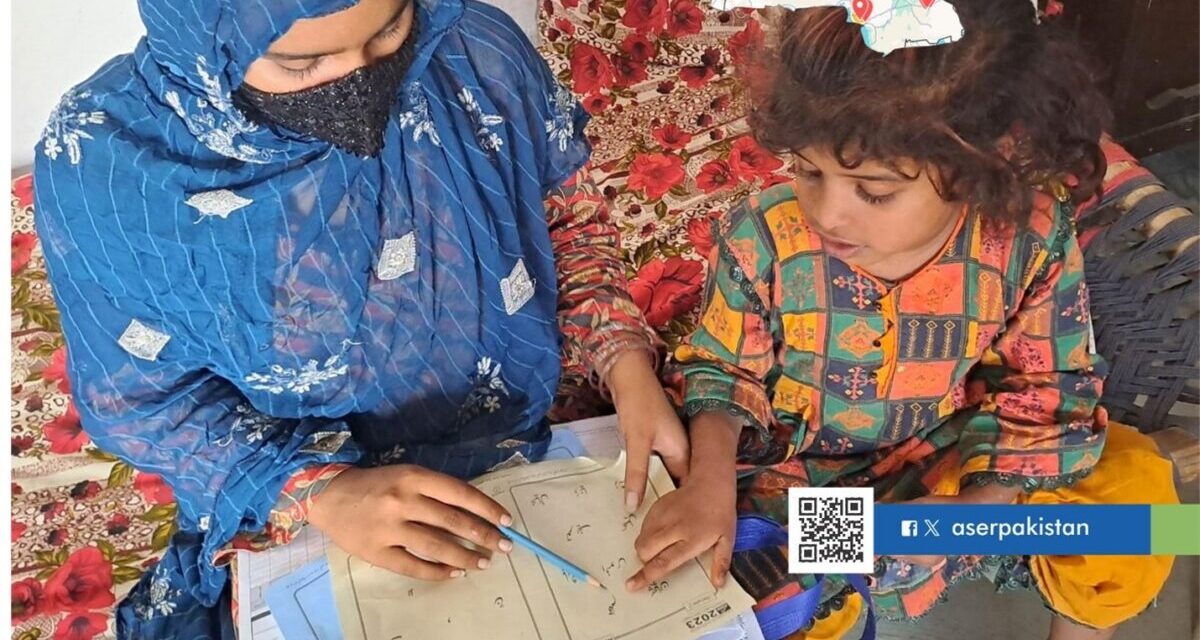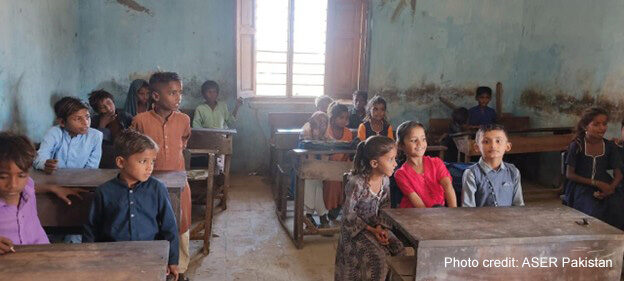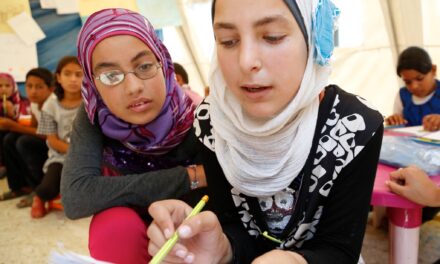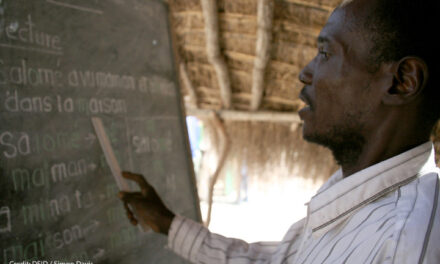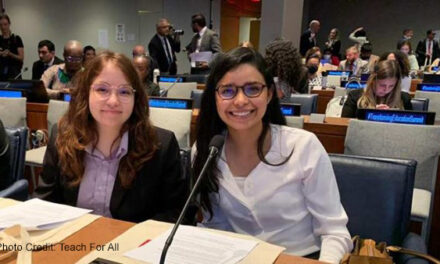This blog was written by Jaffer Ahmed, Research Analyst at Idara-e-Taleem-o-Aagahi, Pakistan.
“Infrastructure is often prioritised over learning outcomes, and administrative appointments tend to follow political affiliations,” observed a district officer, gesturing toward a glass plaque behind him that listed the names of several officers who had occupied his seat in rapid succession over just three years. Another officer reflected, “Elected governments change, but ongoing education projects are often simply rebranded rather than meaningfully transformed, with the aim of securing public credit.”
These remarks reflect the perspectives of middle-tier officials who form a vital link between provincial decision-makers and schools. These actors often operate in a complex environment—under-resourced, with limited autonomy, multiple top-down directives and shaped by shifting political landscapes. Their insights reveal the challenges and opportunities within a system where political cycles and development goals are deeply intertwined.
Newly-elected representatives frequently bring a strong, personalised commitment to service delivery. In competitive electoral environments, visible outcomes—such as the construction of school buildings, missing facilities and technology—are often emphasised. While these are important, sustainable change also requires investments in less visible, long-term interventions: quality teacher training, empowered school governance bodies, effective data systems with feedback loops, and strategic acknowledgment and use of the middle tier teams for meaningful implementation. However, the rewards of such approaches are not always immediate. Policymakers must often navigate complex incentives, where the urgency of re-election pressures can at times overshadow slower, yet more impactful, evidence-based reforms.
Pakistan’s education system continues to stand at a critical juncture. Despite Article 25-A of the Constitution, which promises free and compulsory education for all children aged 5 to 16, 26 million children remain out of school, and many more struggle to attain foundational skills. In this context, the Annual Status of Education Report (ASER) research team at Idara-e-Taleem-o-Aagahi (ITA) launched a five-year longitudinal study to assess the delivery of foundational learning and political accountability across eight diverse constituencies in Punjab, Sindh, Khyber Pakhtunkhwa, and Balochistan. The study spans three phases—baseline (2024), midline (2026), and endline (2028)—and focuses on bridging the gap between electoral commitments and actual learning outcomes.
This innovative longitudinal study aims to shift the public discourse from promises to progress, anchoring conversations in constituency-level evidence. By doing so, it offers a meaningful tool to engage both citizens and policymakers in reimagining education governance. The findings shared in this blog are drawn from the recently-completed baseline phase.
A key strength of this research is its detailed mapping of the political economy of education. It recognises that while there is shared interest across the political spectrum in improving educational outcomes, the mechanisms of governance often fail to accommodate local complexities. By generating constituency-specific insights, the study creates space for locally-responsive reforms that align political incentives with developmental goals.
The study’s mixed-methods approach includes household surveys, school assessments, focus group discussions, and case studies. In 2024, the baseline data collection involved over 13,000 households and assessments of nearly 20,000 children aged 5 to 16. Schools were evaluated for infrastructure, teacher and student presence, and learning environments. Focus group discussions added valuable qualitative depth, capturing the voices of parents, community leaders, school management committees, and district education officials.
The evidence in constituency households presents a nuanced picture. There are encouraging signs, such as relatively high enrolment rates. At the same time, persistent challenges remain in foundational literacy and numeracy. For example:
- Grade 3 results showed extremely low proficiency, with Urdu/Sindhi literacy ranging from 0% to 8%, and arithmetic performance largely under 7%.
- Grade 5 results indicated modest improvements: Urdu/Sindhi literacy peaked at 19%, and arithmetic at 22%, showing that progress is possible with continued support and targeted interventions.
Enrolment rates ranged from 78% to 94%, with Lower Dir leading, followed by Kech and Quetta. Karachi West and Umerkot showed the greatest need for targeted efforts, with higher out-of-school rates. Notably, in several constituencies, more boys than girls were out of school—challenging traditional assumptions on gender gaps and calling for gender-sensitive responses.
Infrastructure assessments revealed that while most schools had access to electricity, many lacked digital learning facilities such as computer labs and internet connectivity. Inclusive infrastructure—such as ramps and accessible toilets—was limited, highlighting an area for focused attention on understanding of inclusion/disability and support in schools. Teacher attendance and qualifications also varied, underscoring the importance of continuous professional development and administrative support. School governance bodies, where functional, were active in select areas, suggesting the potential for strengthening community engagement in school management.
Focus group discussions revealed a shared aspiration for quality education. Parents appreciated increased enrolment but expressed concerns about learning quality, teacher availability, and school infrastructure. Teachers highlighted overcrowded classrooms and outdated curricula, while community members emphasised the need for reforms beyond physical infrastructure—particularly in areas like teacher training, curriculum enhancement, and effective school management.
A review of party manifestos done by the ASER Team indicated ambitious and important policy goals. PML-N and PPP committed to raising the education budget to 4% and 5% of GDP, respectively. PTI emphasised madrassah integration and STEM education, MQM-P focused on urban schooling, and NP prioritised inclusion in underserved areas. These commitments provide a valuable starting point; however, translating them into measurable improvements will require robust systems-based approaches for reform design, monitoring, evaluation, and course correction.
As political attention shifts from campaigns to governance, the true test of commitment lies not in symbolic inaugurations but in classrooms where children struggle to learn. Schools-based assessments reveal important improvements over households in the baseline. There is a gap between homes and schools, where community-mediated learning spaces are critical to develop a lively reading and foundational learning culture. The ASER study reminds us that effective accountability begins at the grassroots. In each constituency, a different narrative emerges, but a common theme unites them: sustainable change requires long-term planning, local engagement, and systems that support real learning.
This baseline report presents an opportunity—not just to critique but to course-correct. By equipping citizens with localised evidence and elevating the voices of those most affected, the study offers a roadmap for reform. Education should not be relegated to the margins of political agendas; it must become central to democratic and generational accountability. The path forward will require collaboration, courage, innovations and a steadfast commitment to the transformative power of learning.

